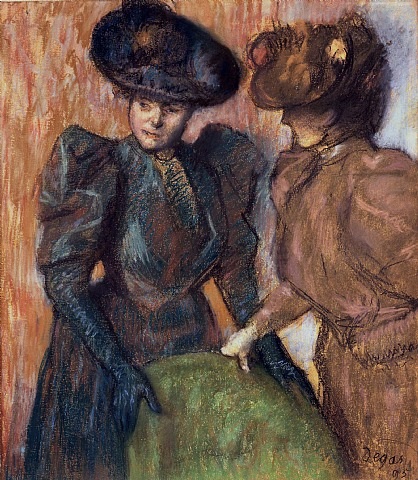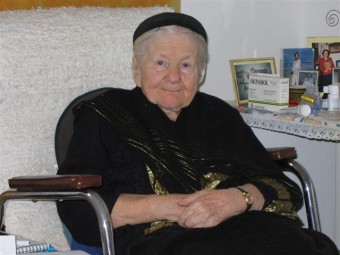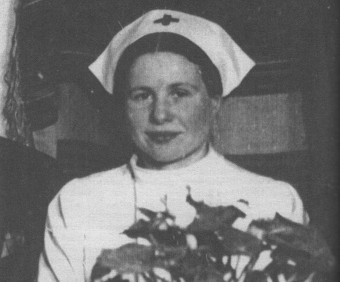With summer in full swing, it’s hard to imagine anything more seasonal and enjoyable than fresh, juicy raspberries; that is, except for Raspberry Cake Day – a whole day dedicated to enjoying raspberries in cake format!

Word of the Day
| |||
| Definition: | (noun) A person who dissents from some established policy. | ||
| Synonyms: | objector, dissident, protester, contestant | ||
| Usage: | With the exception of one or two dissenters, the members agreed to the proposition. | ||

Idiom of the Day
nice one— An informal expression of praise for having done something well. (It can also be used sarcastically to mean the opposite. |

History
Edgar Degas (1834)
Degas was a French painter and sculptor. After copying the Old Masters and becoming a skilled draftsman, he was introduced to Impressionism by Édouard Manet. He then gave up his academic aspirations to pursue art exclusively. Many of his works depict the fast-paced city life of Paris, particularly the ballet, theater, circus, track, and cafés, and feature non-traditional compositions influenced by Japanese prints and photography.
Myanmar Martyrs' Day
On July 19, 1947, Aung San and six of his cabinet members, including his older brother, were assassinated during an Executive Council meeting. His political adversary, U Saw, was found guilty of participating in the assassinations and was later executed for his part in the killings. July 19 has been declared Martyr's Day, a national holiday on which the people of Myanmar remember their slain leader Aung San. On this day, the country holds a moment of silence, and a ceremony is held as family members of Aung San and the other assassinated cabinet members lay wreaths on their tombs.
A Marine Ecologist on Swimming with Sharks and What 'Jaws' Got Wrong
The first time he encountered a tiger shark in the water, marine ecologist Neil Hammerschlag was in the Bahamas conducting research.READ MORE:
1799 - The Rosetta Stone, a tablet with hieroglyphic translations into Greek, was found in Egypt.
1939 - Dr. Roy P. Scholz became the first surgeon to use fiberglass sutures.
1946 - Marilyn Monroe acted in her first screen test.
1949 - Harry Belafonte began recording his first sessions for Capitol Records. They included the songs "They Didn’t Believe Me" and "Close Your Eyes."
1964 - In Illinois, Cahokia Mounds was designated as a U.S. National Landmark.
1984 - Geraldine Ferraro was nominated by the Democratic Party to become the first woman from a major political party to run for the office of U.S. Vice-President.
1985 - Christa McAuliffe of New Hampshire was chosen to be the first schoolteacher to ride aboard the space shuttle. She died with six others when the Challenger exploded the following year.
1990 - Vikki Carr opened the ceremonies for the dedication of the The Nixon Library. She sang in front of 4 Presidents, President Nixon, President Ford, President Reagan and President Bush, all which she had performed for at the White House during their terms. Henry Kissinger, Alexander Haig and Gene Autry were also present.
DAILY SQU-EEZ


Picture of the day

The Great Mosque of Central Java is a mosque in the city of Semarang, Central Java, Indonesia. Dedicated in 2006, the mosque complex covers 10 hectares (25 acres). It can hold up to 15,000 worshipers in the mosque interior and the central courtyard. This photograph was taken from the viewing deck of the 99-metre (325 ft) tall Asmaul Husna Tower, which also houses a museum and a radio station for dakwah.

Social Climber
Photograph by Ami Vitale
Although giant pandas spend most of the day eating and sleeping, they love to climb and play. Here a year-old cub explores the treetops in an enclosure at the Wolong center of the China Conservation and Research Center for the Giant Panda, where captive-bred pandas are trained to live in the wild. If the animal passes tests to gauge its survival skills and instincts, it will be released into the mountains.

knit
knit
knit
knit
Magnus Ragnar the Victorious Viking {A Free Knitting Pattern with Cedar House Yarns}
knit


crochet
crochet
crochet
crochet
crochet

RECIPE

CROCKPOT RECIPE

SWEETS

CRAFTS
update some $1 flip flops into something fab. It's so easy! (needs mod podge!)

make your own mod podge at a fraction of the cost!
Preview by Yahoo
| |||||

CHILDREN'S CORNER ... game
Popsicle Stick Playing Cards


PUZZLE

QUOTE




CLEVER
i responded with the first choice in each question .. odd, no?

EYE OPENER
LIFE IN A JAR- SENDLER’S LIST
THE FOLLOWING IS AN ARTICLE FROM UNCLE JOHN’S BATHROOM READER
SENDLER’S LIST
In 1999 a teacher at Uniontown High School in Kansas encouraged four students to do a project for a national History Day contest. Norm Conard told his 9th-grade students—Elizabeth Cambers, Megan Stewart, and Janice Underwood, and 11th-grader Sabrina Coons—that the project should reflect the classroom motto, “He who changes one person, changes the world entire.” The quote is from the Jewish holy book the Talmud, and Conard suggested basing the project on the Holocaust.
He showed them a 1994 news clipping about “other Schindlers,” people who, like Oskar Schindler (made famous in the film Schindler’s List), had saved Jews from the Nazis during World War II. One of the people mentioned was a Polish woman named Irena Sendler, who was said to have saved 2,500 Jewish children from the Warsaw ghetto. Schindler had saved about 1,100 people. “We thought this had to be a mistake or something,” said Conard. “Maybe this Sendler saved 250, but not 2,500. I mean, nobody had ever heard of this woman.”
SEARCHING FOR IRENA
“We became obsessed with finding out everything we could about Irena,” said 15-year-old Elizabeth Cambers. And they soon found out that the number was right. But how Irena Sendler had saved the children was almost unbelievable.
Sendler was a social worker in Warsaw when the Nazis invaded Poland in 1939. By 1940 they had created the Warsaw ghetto: 400,000 Jews were confined to an area one square mile in size. They were not allowed to leave, and conditions quickly became deplorable. Hundreds died every day from starvation or disease, and soon more were being sent to die in death camps. By 1942 more than 80,000 had perished.
Sendler, who was not Jewish, was sickened by what she saw…so she made a plan. She forged a pass from the Warsaw Epidemic Control Department and, starting in 1942, went into the ghetto every day. There she would ask parents to do the unthinkable: give their children to her so she could smuggle them out. It meant that the parents would probably never see them again, but for the children to stay, the stricken parents knew, was to let them die.
BURYING HOPE
 At incredible risk to herself, Irena smuggled dozens of children out of the ghetto day after day. She took them right past the guards, showing fake documents and saying they were ill. Or she would put children in coffins, saying they were dead. Once out, she gave the children phony papers with new names and found Polish families to adopt them, or she placed them in orphanages. Some she hid in churches and convents.
At incredible risk to herself, Irena smuggled dozens of children out of the ghetto day after day. She took them right past the guards, showing fake documents and saying they were ill. Or she would put children in coffins, saying they were dead. Once out, she gave the children phony papers with new names and found Polish families to adopt them, or she placed them in orphanages. Some she hid in churches and convents.
But while she was saving the children, Sendler knew that she was taking them from their families, and from their own identities. So she made lists of all their real names and addresses and their new locations—in code—and put the lists into glass jars. Then she buried the jars beneath an apple tree in a neighbor’s backyard, hoping that one day she could dig them up, find the children, and reunite them with their families.
On October 20, 1943, Irena Sendler was found out by the Nazis. She was imprisoned—and, because she was the only one who knew the location of the children and the jars, she was tortured. Gestapo agents broke both her feet and both her legs, but Sendler refused to tell them anything. She spent three months in prison, then was sentenced to death.
The girls were so moved by Sendler’s story that they wrote a play about it entitled Life in a Jar. Elizabeth Cambers played “Jolanta,” Irena’s code name and the only name by which the children knew her, and Megan Stewart played a mother who must give up her children. They performed the play at school, then in local clubs and churches. People in the community were so moved by Sendler’s story that the school district, which didn’t have a single Jewish student, declared an official Irena Sendler Day. On top of that, the girls’ work won them first prize in the National History Day contest for the state of Kansas. But the best was yet to come.
FINDING IRENA
The girls kept looking for more clues about Irena’s life. They contacted the Jewish Foundation for the Righteous, an organization that honors non-Jews who risked their lives to save Jews during the Holocaust, to ask if they knew the location of Irena’s grave. They didn’t, they said, but they had something else: her address. Irena Sendler was alive.
Elizabeth, Megan, Janice, and Sabrina immediately wrote to Irena in Warsaw and told her about their project and play. Six weeks later they got an enthusiastic reply. “Your performance and work,” Irena wrote, “is continuing the effort I started over fifty years ago.”
Sendler also told them the rest of her story: She had been brutally tortured and sentenced to death by the Nazis when she refused to tell them where the children were. But the Polish underground came to her rescue, securing Irena’s release by bribing a guard. She spent the rest of the war a fugitive.
After the war ended, Sendler immediately went back to her neighbor’s house, dug up the jars, and began tracking down the children, hoping to reunite as many as possible with their parents. She was able to find many, but hundreds she could not—and most of the parents were dead.
WARSAW
 In 2001 the students’ dream came true when they traveled to Poland to meet the subject of their long study. Irena Sendler, by then 89 years old, took the girls in like granddaughters. “We ran up and hugged her and cried,” said Elizabeth Cambers. “We told her she is our hero, but she said she doesn’t think of herself that way. ‘Heroes do extraordinary things,’ she told us. She just did what she had to do.”
In 2001 the students’ dream came true when they traveled to Poland to meet the subject of their long study. Irena Sendler, by then 89 years old, took the girls in like granddaughters. “We ran up and hugged her and cried,” said Elizabeth Cambers. “We told her she is our hero, but she said she doesn’t think of herself that way. ‘Heroes do extraordinary things,’ she told us. She just did what she had to do.”
The group was even able to meet some of the children, now in their 50s, who were saved by Irena (and by others who helped her, Irena was always quick to point out). One was Elzbieta Ficowska, rescued by Irena when she was five months old by being carried out in a carpenter’s toolbox. They also met a Polish poet who was saved by Irena, who called the young women “rescuers of the rescuer” for bringing Irena’s amazing story to the public. And to the public it went. The story of the students’ visit to Irena in Warsaw and of their performance of Life in a Jar spread. When they returned home, the four young women were interviewed on radio and TV, and in newspapers and magazines worldwide.
The four original students have all graduated, but the Sendler Project, as it is now known, continues today with Mr. Conard and new students. Life in a Jar has been performed more than 170 times in the United States and Europe. They also have a website, through which they raise money for people like Sendler, who risked their lives to save others.
Irena Sendler continued to correspond with the four girls (they visited her twice more, the last time in 2005). In the years before her death, she lived in a nursing home in Warsaw and was cared for, appropriately, by a woman she smuggled out of the Warsaw ghetto more than 60 years before. Sendler died on May 12, 2008 at the age of 98.


















Degas, raspberries, and summer just seem perfect together. Did Degas ever paint a "winter" picture? All that I know seem light and airy and summer-like.
ReplyDelete